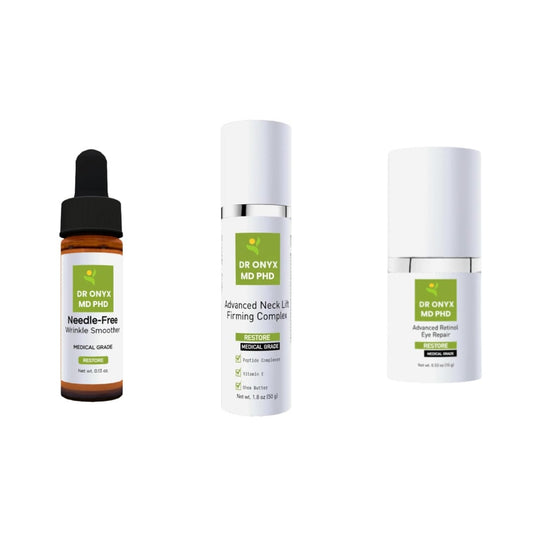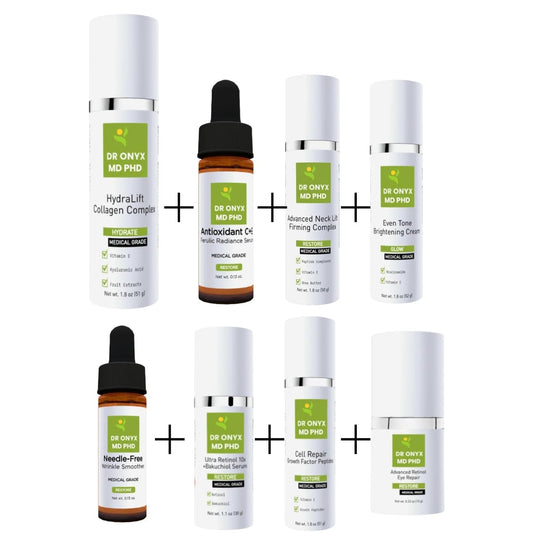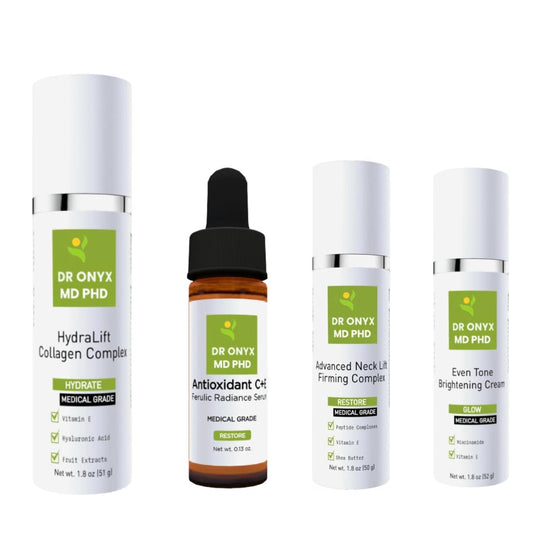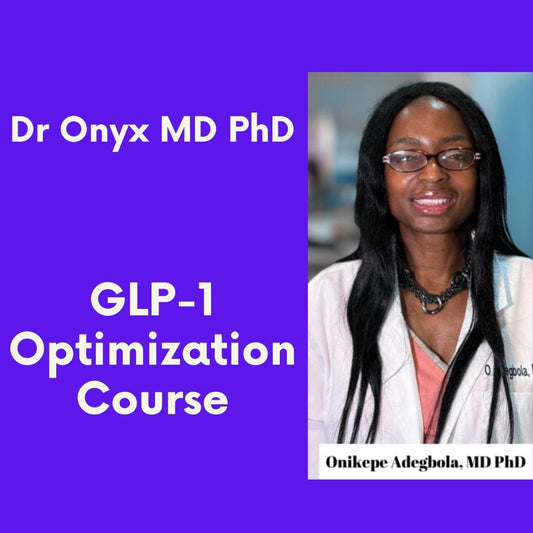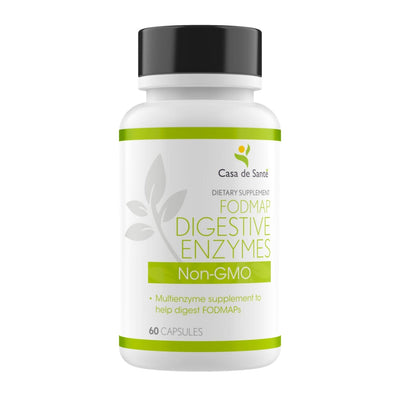What Are the Side Effects of GLP Activate? A Comprehensive Guide
GLP Activate has emerged as a popular supplement in the weight management and metabolic health market. As more people turn to this GLP-1 support supplement, understanding its potential side effects becomes crucial for making informed decisions about its use. This comprehensive guide explores the known side effects of GLP Activate, helping you weigh the benefits against possible drawbacks.
Understanding GLP Activate: What Is It?
GLP Activate is a dietary supplement designed to support the body's natural GLP-1 (Glucagon-Like Peptide-1) activity. Unlike prescription GLP-1 medications such as Ozempic or Wegovy, GLP Activate contains natural ingredients that aim to enhance the body's own GLP-1 production or sensitivity. The formula typically includes components like berberine, cinnamon extract, bitter melon, and various other plant-based ingredients.
The supplement works by potentially supporting the incretin system, which plays a role in insulin secretion, appetite regulation, and glucose metabolism. By targeting these pathways naturally, GLP Activate aims to provide some of the benefits associated with GLP-1 without requiring a prescription.
What makes GLP Activate particularly interesting in the current supplement market is its approach to metabolic health. Rather than simply focusing on one aspect of weight management, it targets the complex hormonal pathways that regulate hunger, satiety, and energy utilization. The GLP-1 pathway has gained significant attention in recent years due to the success of prescription medications targeting this system, but many consumers seek natural alternatives that work with similar mechanisms without the potential side effects or cost barriers associated with pharmaceutical options.
The science behind GLP-1 activation involves stimulating specialized L-cells in the intestines, which naturally release GLP-1 hormone in response to food intake. When functioning optimally, this system helps regulate blood sugar by enhancing insulin secretion when glucose levels rise, slowing gastric emptying to create a feeling of fullness, and signaling the brain's satiety centers. GLP Activate's formulation aims to support and enhance these natural processes through its blend of bioactive compounds that have shown promise in preliminary research on metabolic function.
Key Ingredients in GLP Activate
Most GLP Activate formulations contain a blend of natural ingredients with research suggesting potential metabolic benefits. Common components include berberine (which has been studied for its effects on blood glucose), alpha-lipoic acid (an antioxidant with potential metabolic effects), cinnamon extract (which may help with insulin sensitivity), and chromium (a mineral involved in glucose metabolism). Understanding these ingredients helps explain both the potential benefits and side effects of the supplement.
Common Side Effects of GLP Activate
While GLP Activate is generally considered milder than prescription GLP-1 medications, users may still experience certain side effects. These effects vary in intensity and frequency depending on individual factors such as sensitivity to specific ingredients, dosage, and overall health status.
Digestive System Effects
The most frequently reported side effects of GLP Activate involve the digestive system. Users commonly report mild to moderate gastrointestinal discomfort, especially during the initial weeks of supplementation. These effects may include nausea, particularly when taking the supplement on an empty stomach. Some users experience bloating or a feeling of fullness, which can actually contribute to the appetite-suppressing effects but may be uncomfortable.
Diarrhea or loose stools are also reported by some users, particularly when starting with a full dose rather than gradually increasing intake. Constipation, though less common than diarrhea, affects some individuals as their digestive system adjusts to the supplement. These digestive side effects typically diminish as the body adapts to the supplement, usually within 2-4 weeks of consistent use.
Metabolic Effects
GLP Activate may influence blood sugar levels, which is part of its intended function but can sometimes cause side effects. Some users report mild hypoglycemic symptoms such as dizziness, shakiness, or increased heart rate, particularly if taking the supplement without adequate food intake. These effects are more common in individuals who already have well-controlled blood sugar or who are taking other medications that affect glucose metabolism.
Changes in appetite are expected with GLP Activate, as appetite suppression is one of its primary mechanisms. However, some users report excessive appetite reduction leading to inadequate nutritional intake. Finding the balance between beneficial appetite control and maintaining proper nutrition is important for long-term success with the supplement.
Other Potential Side Effects
Headaches are occasionally reported by GLP Activate users, particularly during the initial adjustment period. These are typically mild and transient. Some individuals experience changes in taste perception or mild dry mouth while using the supplement. Fatigue or changes in energy levels may occur as the body adjusts to potential changes in caloric intake and metabolism. Sleep disturbances are reported by a small percentage of users, though it's unclear whether these are directly related to the supplement or secondary to other changes such as altered eating patterns.
Factors That Influence Side Effect Risk
The likelihood and severity of experiencing side effects from GLP Activate can vary significantly based on several factors. Understanding these variables can help users minimize adverse effects and optimize their experience with the supplement.
Individual Health Conditions
Pre-existing health conditions play a significant role in determining how someone might react to GLP Activate. Individuals with digestive disorders such as irritable bowel syndrome (IBS), Crohn's disease, or ulcerative colitis may experience more pronounced gastrointestinal side effects. Those with diabetes or insulin resistance should monitor blood glucose carefully, as the supplement may enhance insulin sensitivity and potentially lead to hypoglycemia if not properly managed.
Liver and kidney function are important considerations as well, since these organs are responsible for metabolizing and eliminating supplement ingredients from the body. People with compromised liver or kidney function may process the supplement differently, potentially experiencing more intense or prolonged side effects.
Medication Interactions
GLP Activate may interact with certain medications, potentially altering their effectiveness or increasing side effect risk. Diabetes medications, particularly those that increase insulin or lower blood glucose, may have additive effects when combined with GLP Activate. This could potentially lead to hypoglycemia if doses aren't adjusted appropriately. Blood pressure medications might interact with some of the herbal components in GLP Activate, potentially enhancing their effects.
Anticoagulants (blood thinners) may interact with certain ingredients in GLP Activate that have mild blood-thinning properties themselves, such as berberine. This could theoretically increase bleeding risk. Always consult with a healthcare provider about potential interactions before starting any new supplement, especially if you take prescription medications.
Minimizing Side Effects: Practical Tips
If you're considering GLP Activate or currently taking it and experiencing side effects, several strategies may help minimize discomfort while maximizing benefits. These approaches focus on proper introduction of the supplement and lifestyle adjustments that support its use.
Proper Dosing and Timing
Starting with a lower dose than recommended and gradually increasing it allows your body to adjust to the supplement with minimal shock to your system. This approach, often called "titration," is commonly used with prescription GLP-1 medications and can be equally effective with supplements like GLP Activate. Consider starting with half the recommended dose for the first week, then increasing incrementally if well-tolerated.
Taking GLP Activate with food rather than on an empty stomach can significantly reduce gastrointestinal side effects for many users. The timing of your dose may also matter—some users report fewer side effects when taking the supplement with their largest meal of the day, while others find morning administration works best. Experiment with timing to find what works for your body, always staying within the recommended daily dosage.
Dietary Adjustments
Increasing water intake while using GLP Activate can help mitigate side effects like constipation and dry mouth. Aim for at least 8-10 glasses of water daily. Incorporating more fiber-rich foods can help regulate digestion if you're experiencing either constipation or diarrhea, though introduce additional fiber gradually to avoid exacerbating digestive discomfort.
Reducing intake of processed foods, excessive sugars, and alcohol may enhance the effectiveness of GLP Activate while reducing the likelihood of digestive side effects. These dietary adjustments support the metabolic changes the supplement aims to achieve, creating a synergistic effect that may improve overall results.
When to Consult a Healthcare Provider
While many side effects of GLP Activate are mild and transient, certain situations warrant professional medical attention. Understanding when to seek help ensures safety while using this supplement.
Warning Signs
Severe or persistent digestive issues that don't improve after 2-3 weeks of consistent use may indicate that the supplement isn't appropriate for your body. Symptoms like severe abdominal pain, bloody stools, or persistent vomiting should prompt immediate medical consultation. Significant changes in heart rate or blood pressure while taking GLP Activate should be evaluated by a healthcare provider, as they could indicate an adverse reaction or interaction with other medications.
Unusual symptoms like severe headaches, extreme fatigue, unexpected mood changes, or allergic reactions (rash, itching, swelling) should not be ignored. While rare, these could indicate sensitivity to specific ingredients in the formulation. Any concerning symptoms that coincide with starting or changing the dosage of GLP Activate warrant professional evaluation.
Conclusion: Balancing Benefits and Side Effects
GLP Activate represents an accessible option for those interested in GLP-1 support without prescription medications. Like any supplement, it comes with potential side effects that vary from person to person. Most users experience either no side effects or mild, temporary discomfort that resolves as the body adjusts to the supplement.
The decision to use GLP Activate should balance potential benefits against possible side effects, considering your individual health profile and goals. For many, the metabolic support and potential weight management benefits outweigh the typically mild side effects. Starting slowly, staying hydrated, taking the supplement with food, and making complementary lifestyle changes can maximize benefits while minimizing discomfort.
Remember that supplements like GLP Activate work best as part of a comprehensive approach to health that includes proper nutrition, regular physical activity, adequate sleep, and stress management. By understanding potential side effects and taking a thoughtful approach to supplementation, you can make informed decisions about whether GLP Activate is right for your health journey.




